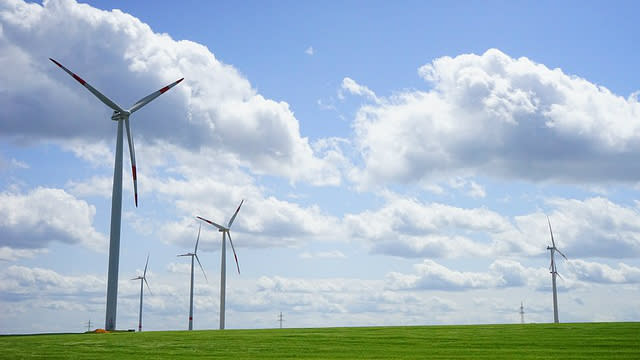1 Secular Trend That Will Boost This Utility’s Growth and Profitability

A secular trend is a long-term disruptive phenomenon that has the potential to cause ground-breaking technological, economic, social, and demographic shifts that can last for decades or even longer. This means that they can disrupt companies, industries, and even markets, while leaving those companies that are positioned to benefit from them capable of growing at an exponential rate and delivering outsized returns. An example of the disruptive nature of these trends is the transition to digital photography, which led to the bankruptcy of leading film and camera company Eastman Kodak Co.
One secular trend gaining considerable momentum is the push to replace fossil fuels with cleaner, sustainable sources of energy. That will act as a powerful tailwind for renewable electricity utilities, including Algonquin Power and Utilities Corp. (TSX:AQN)(NYSE:AQN).
Now what?
Not only has there been a tremendous groundswell of public support for renewable energy, but governments are implementing aggressive clean energy targets aimed at boosting the amount of electricity generated from renewable sources. A range of obligations to combat global warming were formalized in the Paris Agreement on climate change. This treaty seeks to restrict the global temperature increase this century to less than two degrees Celsius above the pre-industrial average.
A key initiative adopted by signatories is the implementation of carbon targets and the push to phase out coal as a source of energy, because it is considered to be the most polluting of the fossil fuels.
As a result, governments across the globe are phasing out coal-fired power generation and increasing the portion of electricity produced by solar and wind. This will act as a powerful tailwind for Algonquin, which owns and operates a diversified portfolio of renewable energy assets comprised of hydro, wind, and solar facilities as well as two natural gas-fired plants, which have a combined generating capacity of 1.6 gigawatts.
Algonquin is already benefiting from this trend, reporting a strong first quarter 2018. Adjusted net earnings more than doubled compared to the equivalent quarter in 2017, while adjusted EBITDA shot up by a healthy 45%. That impressive performance can be attributed to a significant increase in electricity production from its wind and thermal facilities, which was driven by the acquisition of the U.S. Deerfield Wind facility in 2017 as well as greater output from the Sanger thermal plant.
Algonquin’s earnings also received a solid bump from its Liberty utilities business, where greater demand for electricity and natural gas gave earnings a considerable lift.
That earnings growth will continue, because stronger economic growth in the U.S. and Canada will drive greater consumption of electricity.
Furthermore, Algonquin’s earnings are contractually protected with 88% of all the electricity produced by its renewable facilities sold pursuant to long-term contracts, which have an average weighted life of approximately 15 years. This is further enhanced by the fact that demand for electricity is relatively inelastic, because it is a crucial element that powers modern society and economic activity.
Also, like the majority of utilities, Algonquin possesses solid defensive characteristics, including a wide economic moat, which — along with steep barriers to entry for the utilities sector — protects its earnings and reduces the impact of economic slumps.
So what?
Algonquin is an attractive investment that will benefit significantly from the fight against climate change and the push to replace fossil fuels with renewable sources of energy. While waiting for the utility to unlock further value and for its stock to appreciate, investors will be rewarded with its regular and sustainable dividend yielding almost 4%. Management recently hiked Algonquin’s quarterly dividend by 10% to US$0.1282 per share because of the strong first-quarter earnings, reflecting increased confidence in the business’s future.
More reading
4 Great Investments That Will Provide You With Monthly Income
Free investor brief: Our 3 top SELL recommendations for 2018
Retirees: How You Can Earn $700 a Month in Dividends With Less Than $100k in Savings
Fool contributor Matt Smith has no position in any stocks mentioned.

 Yahoo Finance
Yahoo Finance 